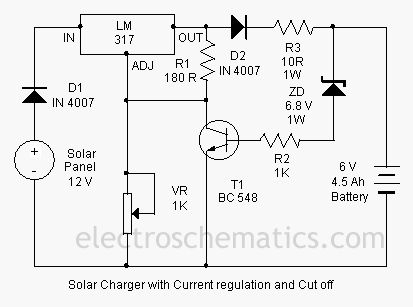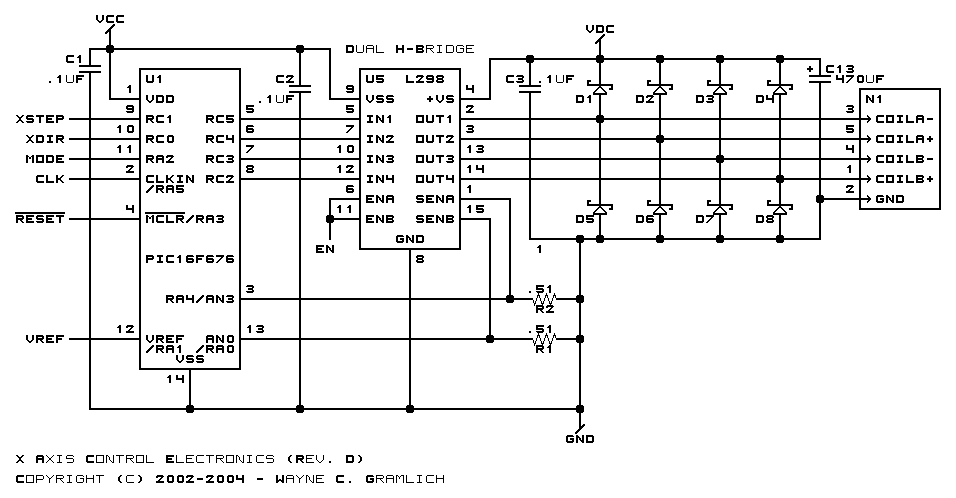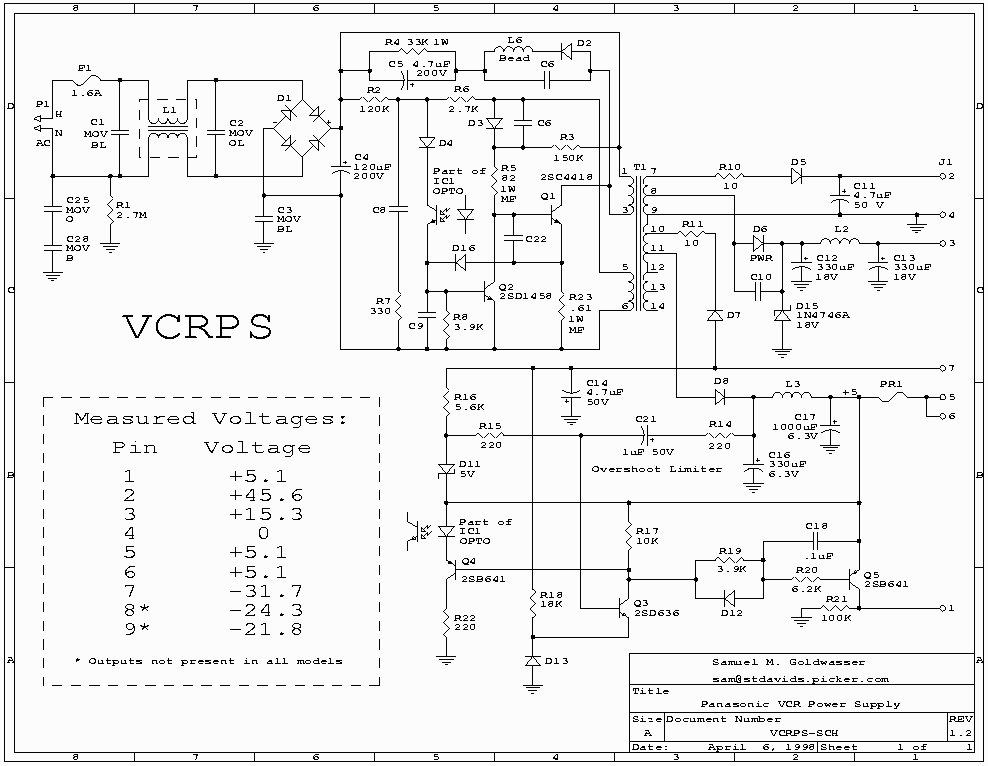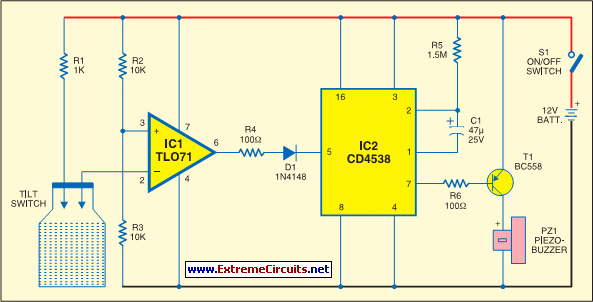
electrometer schematics

The following circuit is an electronic approximation of the gold leaf electroscope, with the added capability of indicating both polarity and electric field magnitude. It is highly sensitive, capable of detecting a television or an electrostatically charged comb from across a room, and can even sense the movement of people. The neon bulb in the circuit serves dual purposes: it provides leakage at the FET gate and protects the FET from electrostatic discharge. The neon bulb should not be omitted, as the FET will not receive proper biasing without it. Ideally, the neon bulb should operate in darkness, although the circuit functions adequately with the bulb illuminated. The presence of light affects the meter's auto-zeroing time constant, making it shorter when the bulb is lit. A VU meter can be used, but meters with full-scale deflections (FSD) ranging from 100 µA to 1 mA are also compatible. If a meter with a significantly different FSD is utilized, it may be necessary to adjust the value of the adjustable resistor. Inexpensive meter movements can be sourced from low-cost battery testers, which typically feature meters in the 0.5 mA to 1 mA range. This electrometer is not designed for portability; attempting to move it will cause the needle to fluctuate erratically. It should be placed on a stable surface and allowed to settle for a minute or two. The adjustment of the meter's center is a trial-and-error process, as nearby hand movements can influence readings. The probe can consist of a few inches of wire, and the visually appealing probe on one meter is simply a redundant adapter from an emergency mobile phone battery. An earth connection is provided through the switch body to facilitate the removal of excessive charge from the probe, though this feature has not yet been necessary.
The circuit operates based on the principles of electrostatics, utilizing a field-effect transistor (FET) as the main sensing element. The neon bulb, typically a low-voltage gas discharge lamp, ensures that the gate of the FET maintains a specified leakage current, essential for accurate readings. The configuration allows the FET to respond to electric fields by varying its conductivity, thus translating the electric field strength into a measurable current that drives the meter.
The sensitivity of the electrometer can be further enhanced by selecting a high-quality FET with low gate leakage and high transconductance. A careful selection of the adjustable resistor is also crucial; it allows for fine-tuning the circuit to accommodate various meter sensitivities. The circuit's design should minimize external influences, thus ensuring that the readings reflect only the electric fields of interest.
For optimal performance, the entire assembly should be housed in a non-conductive enclosure to prevent accidental grounding or interference from external electric fields. Additionally, it is advisable to include a calibration procedure using known charge sources to ensure the accuracy of the readings. The design can be further improved by incorporating shielding around the sensitive components to mitigate the effects of electromagnetic interference (EMI).
Overall, this electrometer design serves as an effective tool for detecting and measuring electric fields with notable sensitivity, making it suitable for educational demonstrations, research applications, and experiments involving electrostatics.The following circuit is an electronic approximation of the gold leaf electroscope`, except that this electrometer indicates polarity as well as electric field magnitude. It is incredibly sensitive! It will detect a television or an electrostatically charged comb from the other side of a room. It can even see` people moving about! The neon bulb se rves two purposes. It provides leakage at the FET gate and also helps to defend the FET against an electrostatic discharge. Do not omit the neon bulb the FET won`t get the proper biasing without it. Ideally, the neon bulb should be in darkness, though the circuit seems to work okay with the neon bulb illuminated.
The only effect is that the meter autozero` has a much shorter time constant when the neon bulb is illuminated. The meter can be of the VU` variety though meters in the range 100 A to 1 mA can be made to work. You may need to change the value of the adjustable resistor if a meter of widely different FSD to that specified is employed.
A source of small, cheap meter movements is those cheap battery testers their meters tend to be in the range 0. 5 mA to 1 mA. You won`t be able to walk around with this electrometer the needle will just kick between its end stops if you try.
Instead, it should be operated on a firm surface and left to settle for a minute or two. Adjustment of the METER CENTRE` adjustment is inevitably a trial and error affair, as bringing your hand near the electrometer will probably alter its reading. The probe can be just a few inches of wire. The impressive looking probe on my meter is nothing more than a redundant adapter from an emergency mobile phone battery!
I provided an earth connection through the body of the switch in anticipation that I might need to use my hand to remove excessive charge from the probe, but I haven`t actually needed to do that yet. 🔗 External reference
The circuit operates based on the principles of electrostatics, utilizing a field-effect transistor (FET) as the main sensing element. The neon bulb, typically a low-voltage gas discharge lamp, ensures that the gate of the FET maintains a specified leakage current, essential for accurate readings. The configuration allows the FET to respond to electric fields by varying its conductivity, thus translating the electric field strength into a measurable current that drives the meter.
The sensitivity of the electrometer can be further enhanced by selecting a high-quality FET with low gate leakage and high transconductance. A careful selection of the adjustable resistor is also crucial; it allows for fine-tuning the circuit to accommodate various meter sensitivities. The circuit's design should minimize external influences, thus ensuring that the readings reflect only the electric fields of interest.
For optimal performance, the entire assembly should be housed in a non-conductive enclosure to prevent accidental grounding or interference from external electric fields. Additionally, it is advisable to include a calibration procedure using known charge sources to ensure the accuracy of the readings. The design can be further improved by incorporating shielding around the sensitive components to mitigate the effects of electromagnetic interference (EMI).
Overall, this electrometer design serves as an effective tool for detecting and measuring electric fields with notable sensitivity, making it suitable for educational demonstrations, research applications, and experiments involving electrostatics.The following circuit is an electronic approximation of the gold leaf electroscope`, except that this electrometer indicates polarity as well as electric field magnitude. It is incredibly sensitive! It will detect a television or an electrostatically charged comb from the other side of a room. It can even see` people moving about! The neon bulb se rves two purposes. It provides leakage at the FET gate and also helps to defend the FET against an electrostatic discharge. Do not omit the neon bulb the FET won`t get the proper biasing without it. Ideally, the neon bulb should be in darkness, though the circuit seems to work okay with the neon bulb illuminated.
The only effect is that the meter autozero` has a much shorter time constant when the neon bulb is illuminated. The meter can be of the VU` variety though meters in the range 100 A to 1 mA can be made to work. You may need to change the value of the adjustable resistor if a meter of widely different FSD to that specified is employed.
A source of small, cheap meter movements is those cheap battery testers their meters tend to be in the range 0. 5 mA to 1 mA. You won`t be able to walk around with this electrometer the needle will just kick between its end stops if you try.
Instead, it should be operated on a firm surface and left to settle for a minute or two. Adjustment of the METER CENTRE` adjustment is inevitably a trial and error affair, as bringing your hand near the electrometer will probably alter its reading. The probe can be just a few inches of wire. The impressive looking probe on my meter is nothing more than a redundant adapter from an emergency mobile phone battery!
I provided an earth connection through the body of the switch in anticipation that I might need to use my hand to remove excessive charge from the probe, but I haven`t actually needed to do that yet. 🔗 External reference





